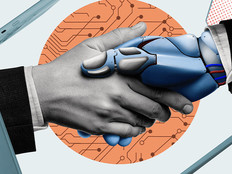The Elements of Omnichannel Retailing
The goal of omnichannel retailing is to engage with customers using a variety of channels and devices. Therefore, by its very nature, it relies on an assortment of technologies, including unified communications, in-store systems and back-end solutions.
Unified Communications
People use different modes of communications in all areas of their lives, so it makes sense to use those same tools to reach out to customers. They include:
Telephony: Customers rely on the phone if they have complex customer service issues, so it’s important to incorporate data collected from other channels into the contact center. It gives representatives analytics-based insights that can drive their interactions with customers.
Online communications: Channels such as email, web chats, texting and video conferencing can greatly improve customer interactions. Many websites offer a service that allows customers simply to click a button to chat with a customer service representative.
Social media: Marketing teams can use social media for brand management. Customer service teams, on the other hand, can monitor social media sites to keep tabs on what customers are saying about the company and to respond to customers in real time.
Customer engagement centers: Omnichannel retailing unites communication modes such as telephone, email and web chat to give representatives a complete picture of customers’ experiences. It employs analytic software to gather data, such as where a call is coming, which helps representatives improve the overall customer journey.
In-Store Technologies
Despite the high-tech advances in the retail industry, consumers still generally prefer shopping in person to other channels. Consequently, in-person shopping is increasingly being reimagined to include high-tech tools that enhance the experience.
Mobile point-of-sale: Because mobile POS systems are portable, sales associates can spend more time interacting with customers and break up long lines of shoppers to complete purchases via a mobile device. Mobile POS can allow associates to push product information, receipts and coupons from a tablet to the customers’ mobile devices.
Proximity couponing: As customers walk through stores, retailers can use location-based technology to track where they’re shopping and send coupons to their smartphones for products in those departments.
Social-driven displays: Some third-party developers are enabling social media interaction in stores with interactive cameras built into in-store displays and software that lets customers post photos of themselves with a product. Retailers can also track when customers send social media messages from their stores to see whether they follow through on purchases.
Inventory management: Merging the various channels available to customers and enabling them to shop seamlessly essentially creates a worldwide warehouse for businesses with multiple locations. Businesses can use inventory management software to move merchandise between locations, and customers can return online purchases in stores.
Back End
Businesses need the right back-end platforms in place to enable omnichannel capabilities. Those that strive for a truly seamless omnichannel experience often install a new customer engagement platform that’s already packaged with all the elements. Others at least deploy a solution that allows them to scale up and add components. Because the elements are designed to work together, they function as an ecosystem without requiring integration work. This makes it far easier for retailers to master the nuances of the omnichannel experience.
Wireless networking: The network is the foundation for omnichannel retailing. It’s what brings all of the in-store and mobile technologies to life. Vendors such as Meraki and Cisco offer integrated devices that provide wireless Internet access in-store and also have beacon technology and analytics on the back end that can help businesses gather and make sense of customer data. Despite their value, these powerful multifunction devices often don’t require a major investment to get off the ground, and they can produce a quick return on investment.
Storage: As businesses collect a growing pool of data from customers, they need a place to store it, and that storage must be accessible to various locations and channels. Cloud-based storage works well in retail because of the cost, accessibility and scalability. It allows retailers to increase usage around the peak holiday season, then scale down after the new year.
Management software: This solution can help retailers stay on top of everything from staff assignments to store repairs, whether it’s during the holiday rush or throughout the year. Armed with tablets or smartphones and management software, staff members can be in constant communication with one another without having to make distracting storewide announcements. Managers can send more cashiers to the registers, call for a clean-up or deploy a maintenance person to repair a broken light fixture. They can track inventory and push out assignments to employees so they can get right to work as soon as they arrive.
Virtualization: Virtualized servers can handle applications such as customer resource management software, improving the flexibility and scalability of such operations. Virtual desktops also provide a consistent experience for retail users, while allowing IT staff to manage hardware from a central location.
To learn more about omnichannel components, read the white paper “Creating the Omnichannel Retail Experience.”







